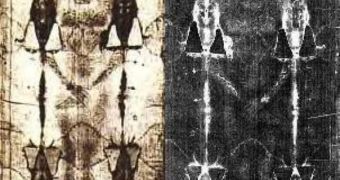For over 7 centuries, the tightly woven linen strip, displaying the vague image of a bearded man, has been worshiped as the burial shroud of Jesus. Texts signal the existence of the shroud since the first century. Two decades ago, radiocarbon dating showed that the Shroud of Turin had been just a medieval hoax. It is a morbid interest mixing science and religion. And the religious part does not want to give up. Now, the Oxford team that made the analysis wants to update the results based on subsequent technical advances. Those opposing the hoax variant can't wait.
"Now that we're 20 years later, the technology certainly has improved," Barrie Schwortz, the photographer involved in the '80s Shroud of Turin Project and making part of the contester camp, told TODAY's Matt Lauer.
In 1978, scientists were allowed to take a look at the fabric kept at the Cathedral of St. John the Baptist in Turin, Italy. Researchers took a small piece that was subsequently radiocarbon dated: the 1988 tests revealed an age no earlier than 1290 A.D.
Of course, critic voices appeared immediately. Some said the researchers analyzed in fact a patch added to the shroud after being partially burned in a 1532 fire. Some say the fire could have changed the chemical makeup of the carbon isotopes in the fabric or the samples were contaminated.
"No new tests will be done on the shroud, which is rarely displayed publicly," Schwortz said.
With all its age and fire damage, the shroud looks amazingly well-preserved.
"Assuming for a moment that it really was first century, it is a bloodstained cloth that is against Jewish tradition to even handle, so they would have kept it a secret. It would have been well preserved, probably kept hidden most of the time, and perhaps that's why the condition is as good as it was," said Schwortz.
One issue: the Shroud of Turin was first documented in 1357 in Lirey, France, being donated to a church by the widow of Geoffroi de Charny, a French knight. The Catholic Church does not regard it as being authentic, as bishop Pierre D'Arcis called it a fraud in 1389, and he said he had even talked to the painter of the fabric, but it does tolerate it as a symbol of Christ's death and resurrection. Since 1578, the shroud has been kept at the Cathedral of St. John the Baptist, in Turin.
Other investigations
The image of the shroud is 3-D, but this does not give many hopes to those supporting the originality of the shroud: a 2005 test made by a French magazine achieved the same effect by placing a wet linen strip on a facial mold and applying after that a red pigment (in that case, an iron oxide) combined with gelatin.
One Oxford co-researcher said that the pollen grains on the shroud could only have come from the Middle East. This affirmation is weak. It does not prove an age, and even so, which plant is strictly found in Israel?
An 1995 unauthorized DNA analysis on a sample of the pigment showed that the degraded sample could have belonged to a man. A really interesting finding, as forensic detectives cannot find this in more recent samples coming from the fabric.

 14 DAY TRIAL //
14 DAY TRIAL //